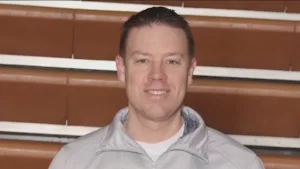BluePoint system installed
December 20, 2018

In November, Associate Principal for Operations and Technology, Dr. Ken Sorensen held a school-wide assembly addressing new safety features implemented this year, including the BluePoint emergency alert system.
Administration became aware of BluePoint last year and decided to implement it over the summer after visiting schools around the area that had the system in use, such as Lyons Township, Hinsdale Central, and Hinsdale South.
“We started to explore it some more and realized that this is probably something that could be of benefit here,” Dr. Sorensen said.
The installation of the systems at DGN, DGS, and Transition 99 cost the district $175,960.
BluePoint works like a fire alarm, where anyone can activate a pull station. When the system is activated, an emergency response message begins playing on a loop over the public address system (PA), and blue strobe lights flash all around the building. The police are immediately notified.
The system itself was not actively functioning until November due to setbacks in testing.
When the system became fully functioning, Dr. Sorensen outlined at the assembly the potential consequences for falsely activating a BluePoint alarm, which were added to the student handbook.
The handbook states that “activating a police alarm without evidence of imminent danger” may result in suspension, police consequence, arrest or expulsion.
“I don’t expect anyone to activate a pull station without reason, because of the seriousness of this and the response that will take place,” Dr. Sorensen said.
In addition to the 28 pull stations located throughout the building, 20 remote controls that can activate the BluePoint system from anywhere were given to administrators and security staff.
Part of the decision to introduce many of these safety features have come from positive feedback of the Student Safety Committee, a group run by Dr. Sorensen that meets with students to discuss school safety.
The committee was formed at the end of last year when administration heard of student plans to organize a walkout in protest of gun violence after the shooting in Parkland, Florida.
Administration wanted to work cooperatively with students to ensure their voices were heard and everything was done safely.
Senior Riley Hornilla, one of its members, appreciates seeing feedback from students implemented this year.
“We’re trying to help the administration understand what we want in order to keep us safe,” Hornilla said.
Dr. Sorensen emphasized the importance of listening to feedback from the committee and considering that when making decisions regarding student safety.
“Sometimes we get caught up in an adult perspective on things, and we’re here for kids, so we need their perspectives to understand what’s on their mind,” Dr. Sorensen said.
Hornilla hopes that working with the committee and continuing to inform both students and staff will be the best way to help people think about how to keep themselves and others safe.
“I don’t think there’s ever going to be a ‘here’s the best way to deal with this’. Cookie cutter plans like that are never going to work. You want kids to focus on making sure that they feel safe,” Hornilla said.

























